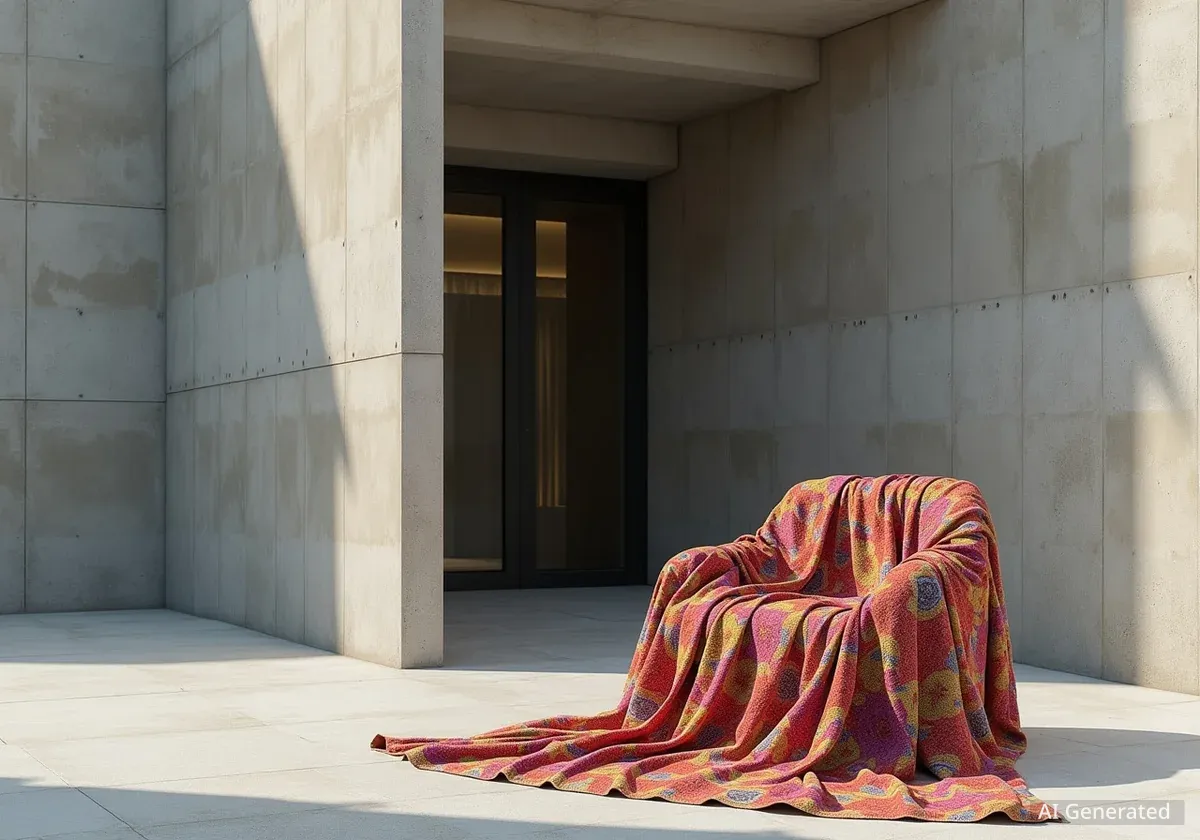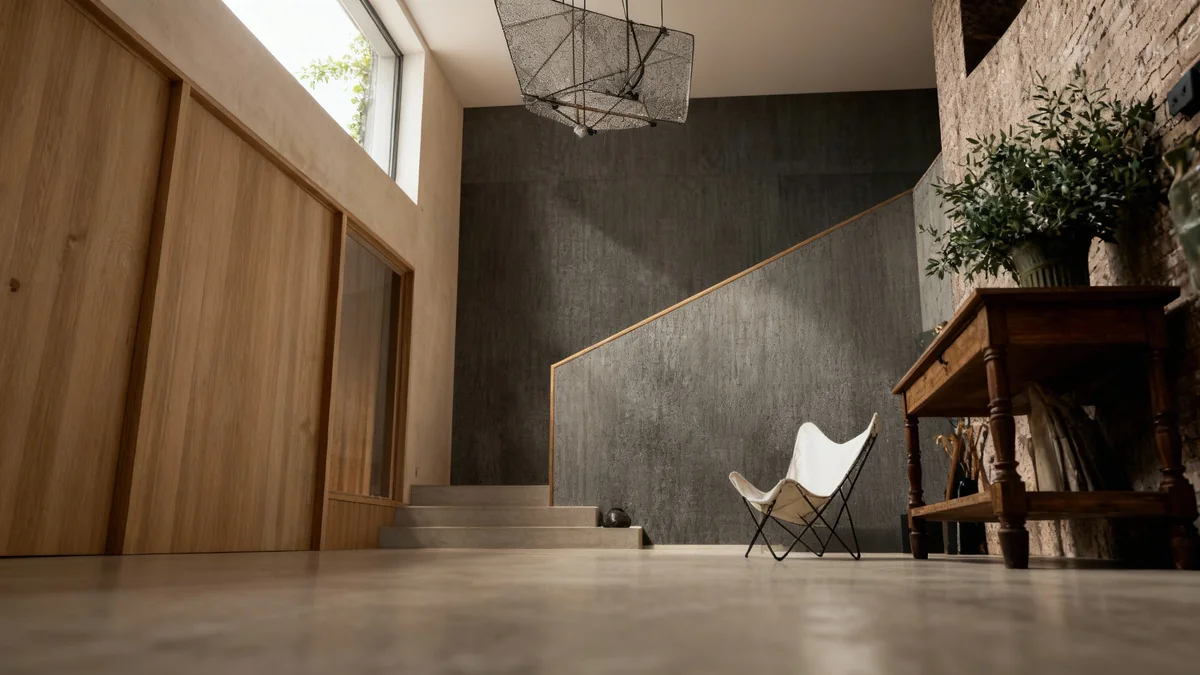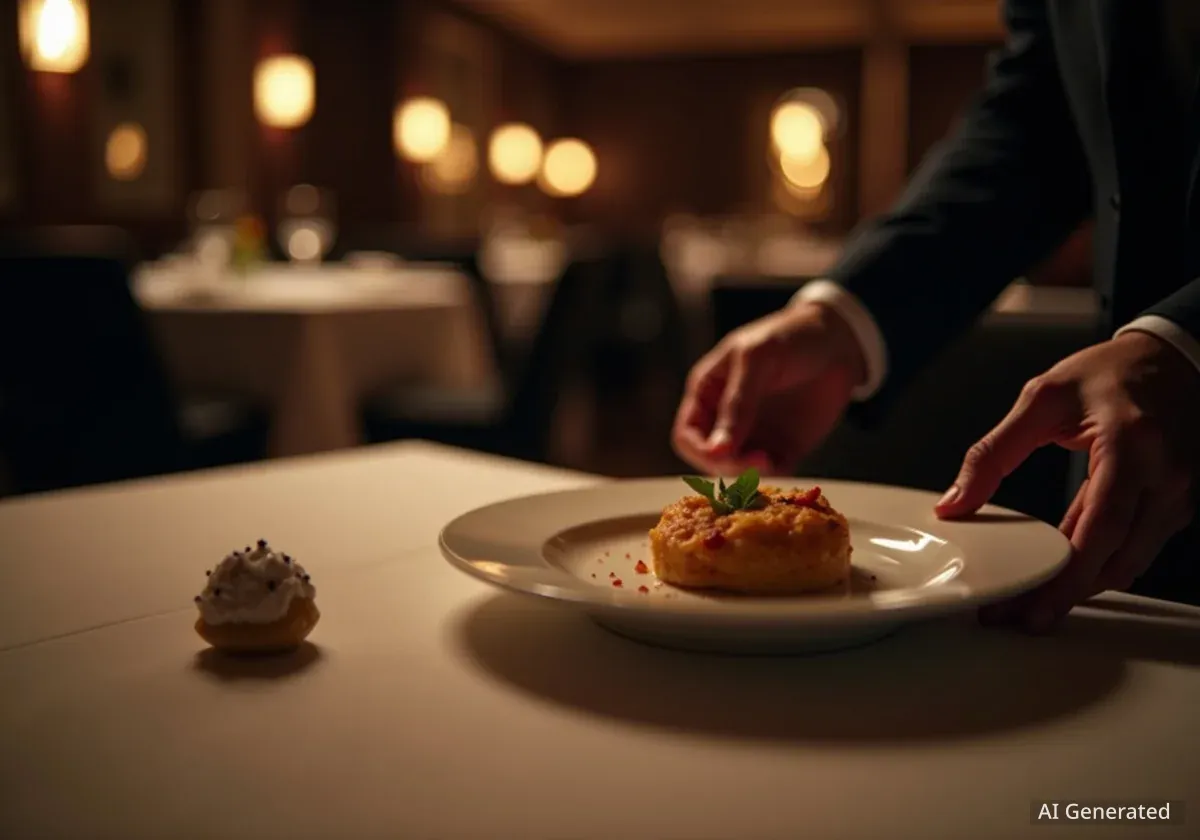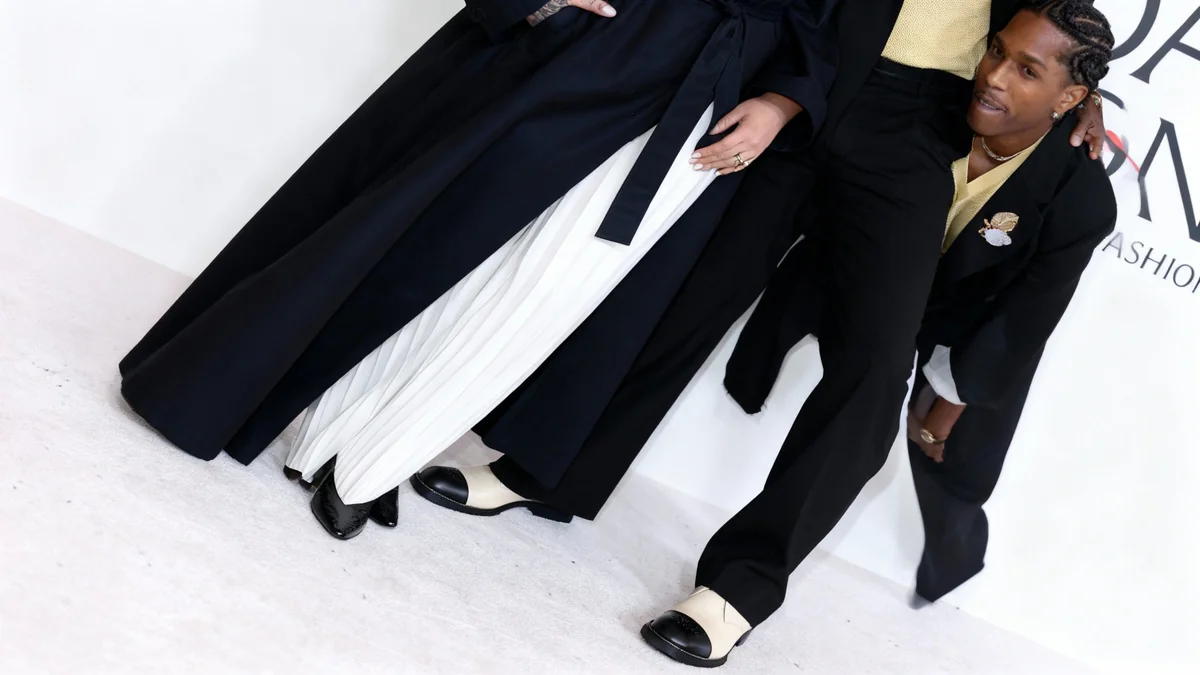Recent reports highlight diverse trends in design, from the vibrant interiors of renowned designers to the stark architecture of a European capital. This exploration reveals a wide spectrum of aesthetic choices currently influencing living spaces and urban landscapes. Key figures in the design world are showcasing their latest projects, platforms, and personal environments, reflecting a shift towards both bold expression and functional artistry. Meanwhile, a look at North Macedonia's capital offers a historical perspective on architectural movements.
Key Takeaways
- India Mahdavi transformed her Arles home with saturated colors.
- Gustaf Westman focuses on fun, functional design.
- Kelly Wearstler launched a new collectible design platform.
- Skopje showcases significant Brutalist architecture.
- Maye Ruiz emphasizes bold contrasts and the color red.
- Comme des Garçons Play's heart logo achieved global recognition.
India Mahdavi's Arles Home: A Color Transformation
Interior designer India Mahdavi has revealed her home in Arles, France. She refers to it as her 'sleeping beauty' property. Mahdavi has completely transformed the space into a vivid, color-saturated environment. Her approach emphasizes bold hues and unexpected combinations, creating a distinctive aesthetic.
Mahdavi is known for her innovative use of color. Her work often features a playful yet sophisticated palette. This project in Arles demonstrates her signature style, bringing new life to an older structure. The transformation showcases how color can redefine a living space.
"My home in Arles is a canvas for joy and color. It's about waking up a 'sleeping beauty' with vibrant life," Mahdavi stated. Her philosophy centers on creating spaces that evoke emotion and personality.
Fact: Color Psychology in Design
Studies indicate that color can significantly impact mood and perception. Bright, saturated colors, like those used by Mahdavi, can evoke feelings of energy and happiness. Conversely, muted tones often promote calm and relaxation.
Gustaf Westman: Functional Fun in Design
Gustaf Westman, a Stockholm-based designer, is gaining recognition for his unique approach to interiors. He combines functionality with a quirky, colorful aesthetic. Westman's designs often feature unusual shapes and vibrant shades, making everyday objects engaging and playful.
His work has become popular on social media platforms, particularly Instagram. Westman’s style is often described as 'chaotic' due to its unconventional nature, yet it consistently delivers practical solutions. He aims to inject fun into functional design elements.
The Rise of 'Quirky' Design
The demand for distinctive and personalized home furnishings is increasing. Designers like Westman cater to this trend by offering pieces that stand out. His furniture often serves as a focal point in a room, reflecting a growing appreciation for individualistic expression in design.
Context: Scandinavian Design
Traditionally, Scandinavian design is known for its minimalism, clean lines, and neutral color palettes. Westman's work represents a departure from this, incorporating bold colors and playful forms while retaining a focus on practical use. This marks an evolution within the broader Scandinavian design movement.
Kelly Wearstler's New Platform: Side Hustle
Designer Kelly Wearstler has launched a new collectible design platform named 'Side Hustle.' This platform offers exclusive access to unique design pieces. Wearstler is known for her eclectic and luxurious style, often blending vintage and contemporary elements.
The 'Side Hustle' platform aims to connect collectors with limited-edition designs and art objects. It showcases Wearstler's curatorial vision, providing a space for both established and emerging artists. This initiative expands her influence in the high-end design market.
- The platform features exclusive collaborations.
- It includes furniture, lighting, and decorative objects.
- Pieces are often limited in quantity, increasing their collectibility.
Skopje: A Brutalist Metropolis
North Macedonia's capital, Skopje, stands as a notable example of Brutalist architecture. The city's urban landscape reflects a period of significant post-earthquake reconstruction in the 1960s. This architectural style emphasizes raw concrete, massive forms, and functional design.
Skopje's Brutalist buildings are seen by some as a testament to the optimism of a bygone era. They represent a large-scale attempt to rebuild and modernize the city after a devastating earthquake in 1963. The architecture aimed for efficiency and resilience.
The Legacy of Brutalism
Brutalism emerged in the mid-20th century, characterized by its imposing scale and exposed structural elements. While often controversial, these structures are increasingly recognized for their historical significance and unique aesthetic. Skopje offers one of the most comprehensive urban examples of this style.
Statistic: Skopje Earthquake
The 1963 Skopje earthquake destroyed approximately 80% of the city. This event led to an international effort to rebuild, with architects from around the world contributing designs, many in the Brutalist style.
Maye Ruiz: A Passion for Red and Contrasts
Mexican interior designer Maye Ruiz, founder of Maye Estudio, expresses a strong connection to the color red. She describes this relationship as a 'codependency.' Ruiz is known for her bold use of color and high-contrast designs.
Ruiz's aesthetic often incorporates dramatic pairings and vibrant elements. Her inspirations include French fries and films by Pedro Almodóvar, suggesting a blend of everyday life and artistic influences. This results in interiors that are both striking and personal.
"Red is not just a color; it's an emotion, a statement. My designs often hinge on its power, combined with strong contrasts to create a dynamic space," Ruiz explained.
Bold Contrasts in Modern Interiors
The use of bold contrasts, such as black and white with a pop of red, is a popular trend in contemporary interior design. This approach can create visual interest and define different zones within a space. According to design experts, it adds a sense of drama and sophistication.
The Global Appeal of Comme des Garçons Play
The Comme des Garçons Play line, recognizable by its iconic cartoon heart logo, has achieved global recognition and an estimated value of $100 million. This sub-brand of the Japanese fashion house Comme des Garçons has successfully blended high fashion with accessible, casual wear.
The distinctive heart logo, designed by Filip Pagowski, has become a cultural phenomenon. Its simplicity and playful nature have resonated with a wide audience, making it one of the most recognizable symbols in contemporary fashion. This success highlights the power of effective branding.
Brand Identity and Market Impact
The Comme des Garçons Play line demonstrates how a strong brand identity, even with a single prominent motif, can drive significant commercial success. Its appeal cuts across different demographics, from fashion enthusiasts to everyday consumers seeking stylish, recognizable apparel. The brand's ability to maintain its 'cool' factor while achieving mass appeal is a notable achievement in the fashion industry.
Emerging Design and Art Trends
Beyond established names, the design world continues to evolve. New trends are constantly emerging, from innovative cutlery to surrealist furniture. These developments reflect a desire for unique, statement-making pieces and experiences.
Cutting-Edge Cutlery
Designers are reimagining everyday objects like cutlery. New collections feature unusual forms, materials, and finishes. This focus on 'fabulous flatware' aims to make dining experiences more artistic and conversational. It transforms functional items into design statements.
Kite-Flying as Art
What began as a weekend hobby for some has evolved into museum-worthy art. Artists are transforming kite-flying into a serious discipline, creating intricate, sculptural kites that are exhibited in galleries and museums. This blurs the lines between craft, sport, and fine art.
Jamb Antiques and Ambrose the Cat
Jamb, a company known for its antiques, has integrated a unique personality into its brand: Ambrose the cat. This feline companion, belonging to Charlotte Freemantle, has become a behind-the-scenes fixture, adding a personal and charming touch to the world of antique dealing. It highlights the human (and animal) element in design and business.
Surrealism's Return to Design
Surrealism is experiencing a resurgence in furniture and homeware. This time, it comes with a 21st-century twist. Designers are incorporating dreamlike, often whimsical elements into their creations, challenging conventional notions of form and function. This trend reflects a desire for escapism and artistic expression in living spaces.
Carsten Höller's Interactive Art
Artist Carsten Höller continues to push boundaries with interactive art. His latest project aims to test ethical limits through playful engagement. Höller's work often involves audience participation, creating experiences that provoke thought and challenge social norms. This reflects a broader trend in contemporary art towards immersive and interactive installations.




